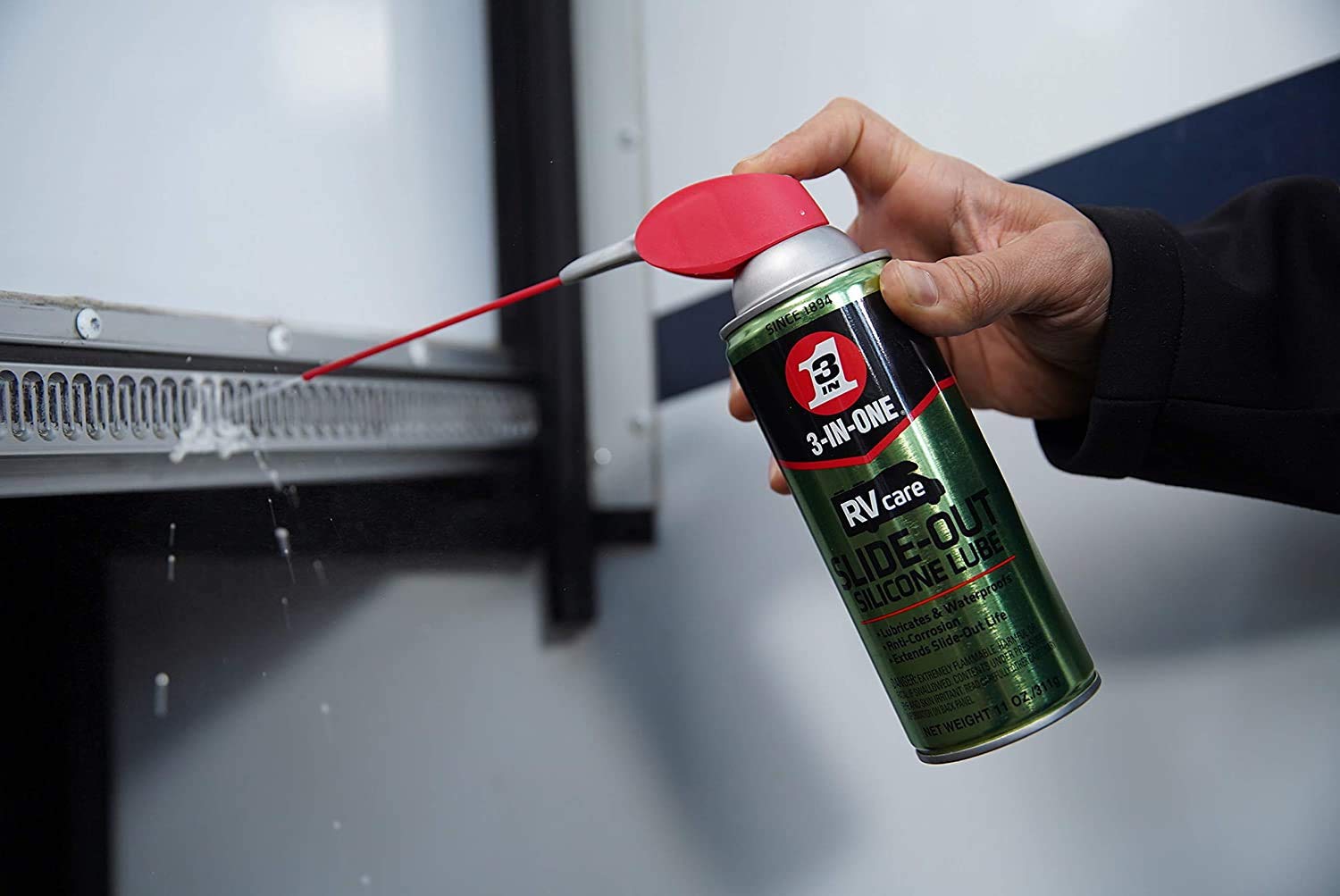
How To Lubricate RV Slide-Outs
RV slide-outs are standard on many RVs with some having up to four! With the push of a button, you can double your living space.
Showing up at a campsite and having issues with your RV slide-outs or getting ready to leave and having issues can be frustrating.
As with anything, regular maintenance helps extend the life of components and increases the chances of finding a small problem before it’s a big, costly one.
Save your RV slide-outs and reduce problems and repairs with these simple maintenance tips.
Types of RV slide-outs
Different manufacturers use different slide systems and you may even have multiple types of slide systems on your RV. Oftentimes, smaller slides will use a different system than larger ones to save weight and costs.
Here are the RV slide-out systems you will commonly see.
Rack and Pinion
This is the oldest type of slide system and is tried and tested. They are able to support large, heavy slides and if maintained are very reliable.
The traditional system consists of the rack, which is the support that extends under your slide and has a metal track with teeth that are driven in and out with the pinion, which is a gear that is rotated by a motor.
There are a couple of newer systems. One with the tracks on the side of the slide and one with hidden tracks that are contained inside the RV so nothing is visible on the slide itself. These are variations of the rack and pinion system that use essentially the same mechanical operation.
Hydraulic
In most cases, hydraulic systems will actually be essentially rack and pinion systems that are operated by a hydraulic pump and pressurized lines rather than an electric motor.
Hydraulic systems are also very robust and used on large, heavy slides. There are added components to this system. In some cases, the hydraulic system for the slide may be connected with landing gear components and therefore, problems with one can affect the other.
Cable
Stainless steel cables, generally running along the sides of your slide-out, indicate a cable and pulley system.
The pulleys will be located on the top side of your slide-out with the cables routed around them and extended to the outside edges of the slide. There they will be fastened to the slide.
Schwintech
This system is easily detected by its unique aluminum track with a worm gear groove throughout its length.
It is actually another form of rack and pinion system and is seen more on newer RVs. These systems are made for smaller, lighter slides. One advantage to this system is it is claimed to be self-adjusting.
RV slide-outs lubrication
Many slide components are exposed to the elements and road grime. Regardless of which system you have, moving parts all need lubrication.
The first step is to clean the components to be lubricated. Any exposed parts such as the geared racks, cables, and support rams should all be free of debris before lubrication.
Using a quality RV slide lubricant will provide lubrication without attracting grime.
Racks, cables, and any exposed gears can be lubricated. Anywhere there are moving parts or parts that are moving together, there will be friction and lubrication will be of benefit.
After cleaned, spray lubricant on all gears, slides, cables, and rollers. It may be necessary to move your slide in and out to access the entire length of certain components.
Apply a light coating to all components. Excess lubricant will go to waste dripping from surfaces and cause a mess and is more likely to attract and collect dirt.
Refer to your owner’s manual or the manufacturer to see if there are specific required lubrication areas.
RV slide-outs should be cleaned and lubricated at least twice a year and possibly more depending on the areas you travel in.

RV slide-out maintenance
Along with keeping the slide components clean and lubricated, there are some additional maintenance requirements for trouble-free RV slide-outs.
When cleaning the components, perform a thorough inspection looking for any of the following:
- Loose fasteners
- Damaged mechanical components
- Frayed cables
- Leaking hydraulic lines or fittings
- Loose or damaged electrical connections and wires
- Loose or damaged pulleys (located inside, on the top of the slide)
- Uneven wear on tracks (rack and pinion and Schwintech systems)
The seals surrounding the slide-out are critical for weatherproofing your RV. These rubber seals should be cleaned and treated with a rubber seal conditioner. Check for tears in the seal.
If you have a hydraulic system, you will want to check the fluid level along with all hydraulic lines and fittings for leaks. Remember if you are doing any work with the hydraulic system – it is under pressure.
It is a good idea to take the time and run the slide in and out a couple of times watching for even extending and retracting of the slide. When needed, have adjustments made. An out-of-adjustment slide will cause extra wear and stress on the slide.
Listen for grinding, squealing, or any noise that is not normally heard. Having a second person operating the slide while you look and listen for problems is best.
Track your RV maintenance
Anytime you have moving parts there will be friction and wear that require some maintenance and lubrication. Keep your slide-outs running smoothly and trouble-free by performing regular lubrication and maintenance.
Make sure you keep track of all your RV maintenance and repairs with an online tool such as RV LIFE Maintenance. Not only can you keep all of your documents in one place, but you’ll also receive timely reminders when maintenance is due to help you avoid costly repairs and potentially serious accidents.
Continue reading:



